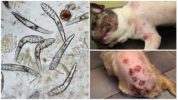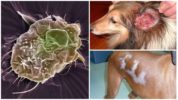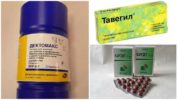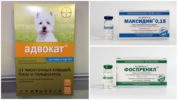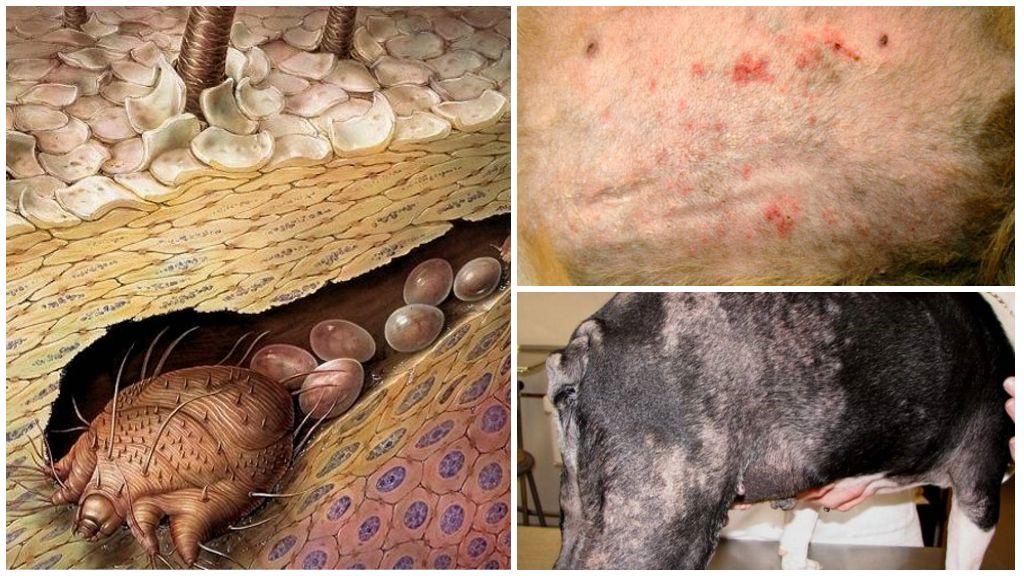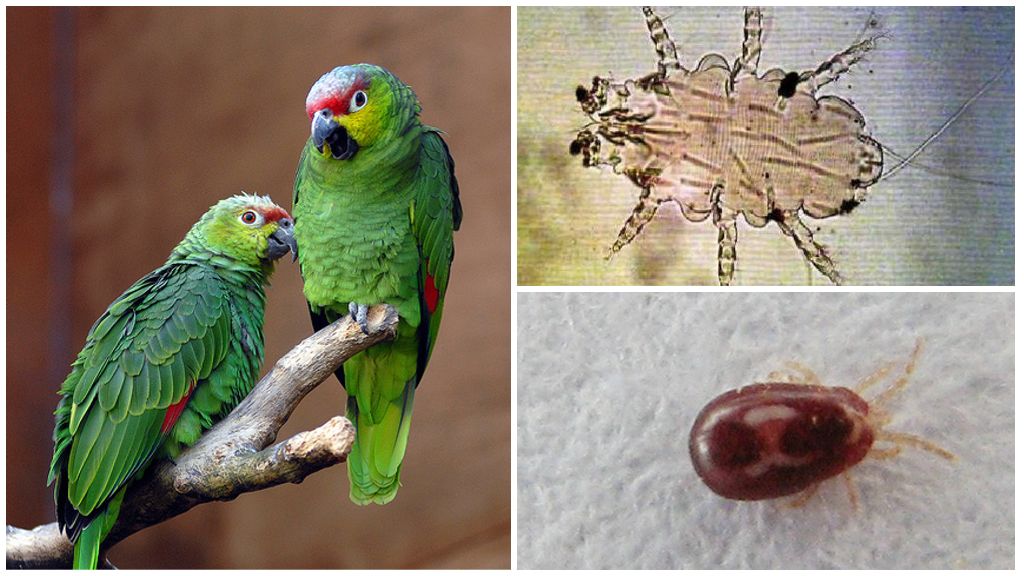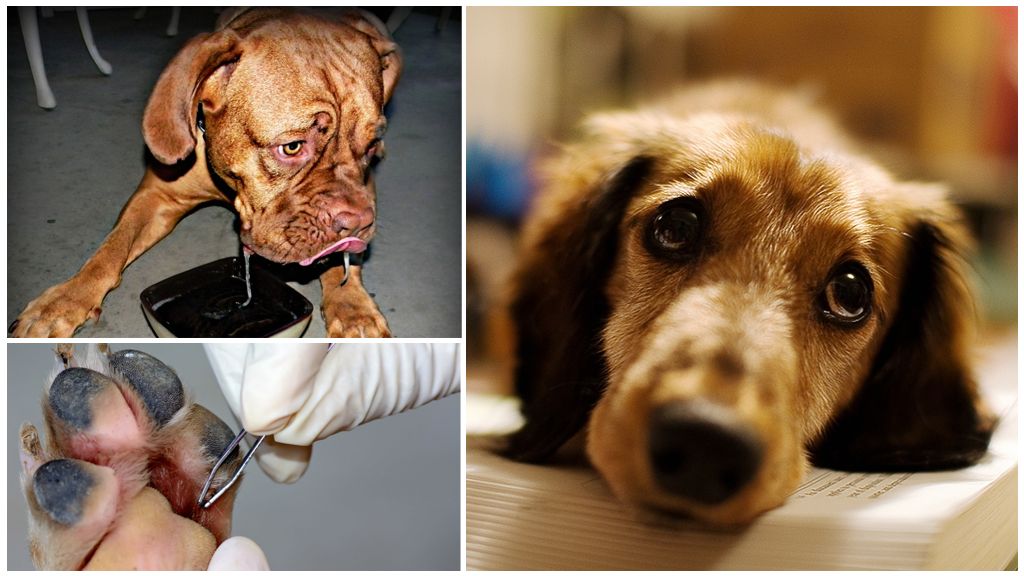- Demodex in dogs
- Sarcoptes scabiei in dogs
- Notoedrosis in dogs
- Treatment of subcutaneous tick in animals
- Treatment of subcutaneous tick in animals
The subcutaneous tick in dogs causes various dermatological diseases. The clinical picture with different types of pathogens is similar - itching, irritation of the epidermis, redness, the appearance of erosion, sores, scratching. In severe cases, the general condition of the animal worsens. The treatment of a subcutaneous tick in a dog is complex. The main efforts are aimed at the destruction of the parasite, the elimination of unpleasant symptoms, strengthening immunity.
Types of subcutaneous ticks in a dog
Dogs attack 3 pitchfork ticks - external, subcutaneous, intradermal. The first type includes ixodid ticks. Parasites live in tall grass, on the lower branches of shrubs. They feed on the blood of animals, birds, people. In dogs, they stick in most cases on the stomach. Introduce the head under the skin, the abdomen is outside. Ixodid ticks cannot get under the skin completely. For parasite recovery use tweezers syringea strong thread special devices.
Demodex
A subcutaneous tick of microscopic size lives on the body of each animal. Lives demodex in hair follicles, sebaceous ducts. It feeds on epidermal flakes, sebaceous secretions, cleansing the skin of unnecessary accumulations. With a decrease in immunity, a metabolic disorder, the composition of the food changes. The demodex subcutaneous tick releases a toxic substance, and dies after a few days. In the process of decomposition, signs of intoxication appear.
Symptoms of a subcutaneous tick in a dog are itching, redness, inflammation, hair loss. Diagnosed by laboratory analysis of scraping from the affected areas of the skin. The treatment at home is long. It is impossible to completely get rid of the demodex hair tick. The main task is to reduce its amount to a safe level. Significant efforts are directed towards strengthening immunity.
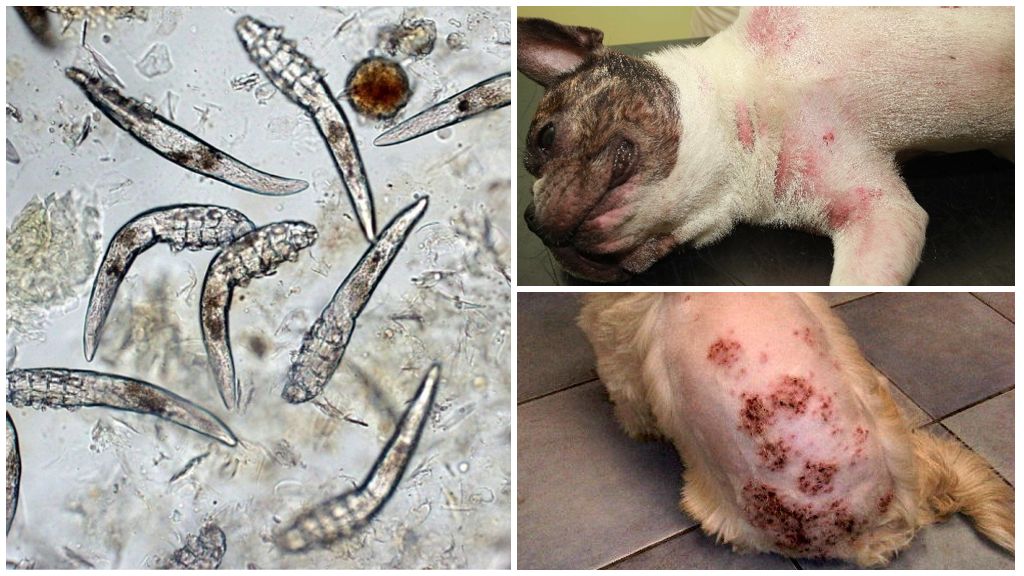
Sarcoptes scabie
A microscopic parasite causes a dermatological disease sarcoptosis. The clinical picture is similar to demodicosis, but is more pronounced. Sores, ulcers, coarsened areas appear on the skin. The hair falls to shreds, bare patches form. At an early stage, the localization is focal, gradually spreading throughout the body.
A sick dog is a source of infection scabies mites other animals. Other dogs, cats, people often suffer. A subcutaneous tick may exist on the human body for about 30 days, causing irritation, itching, and redness. He does not lay eggs under the skin, dies. In the chronic form of sarcoptosis in dogs, keratinized areas of the epidermis appear, scars, age spots. In places where the parasite is localized, the coat does not grow. A photo of the subcutaneous tick in dogs of this species is located next.
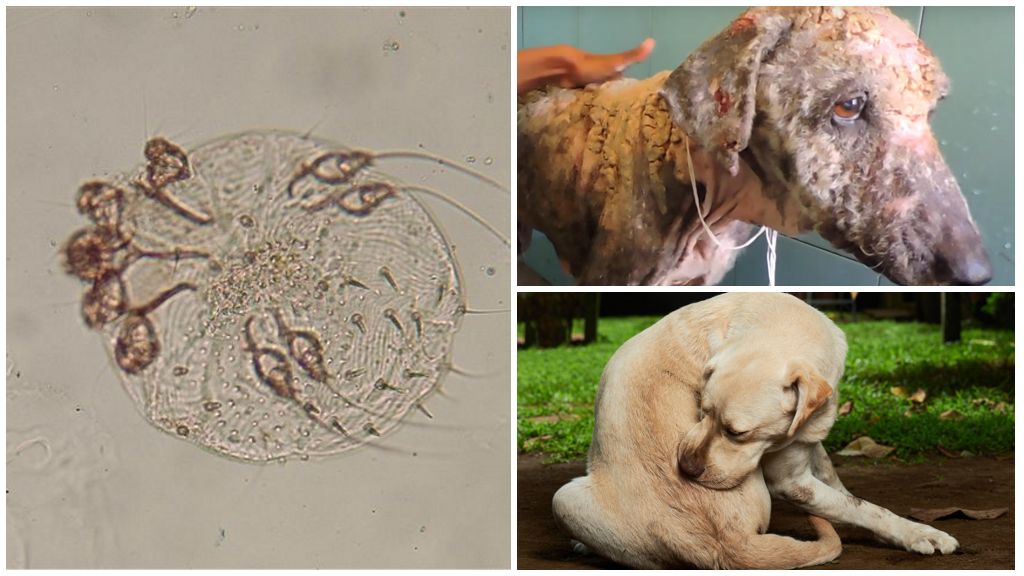
Notoedrosis
A microscopic tick under the skin provokes ear scabies or knothedrosis. It affects the outer part of the ear. Vivid symptoms of the disease - severe itching, scratching on the ears, head. The dog becomes restless, constantly curls up to scratch his head. Scratches, hematomas, bruises, and bloody spots form.At the site of the lesion, wool falls out, bald patches form.
In the absence of qualified therapy, knothedrosis progresses, the parasite moves to the body, mucous membranes. What a subcutaneous tick looks like in dogs is shown below. It is necessary to treat comprehensively, therapy is prescribed after confirmation of the diagnosis.
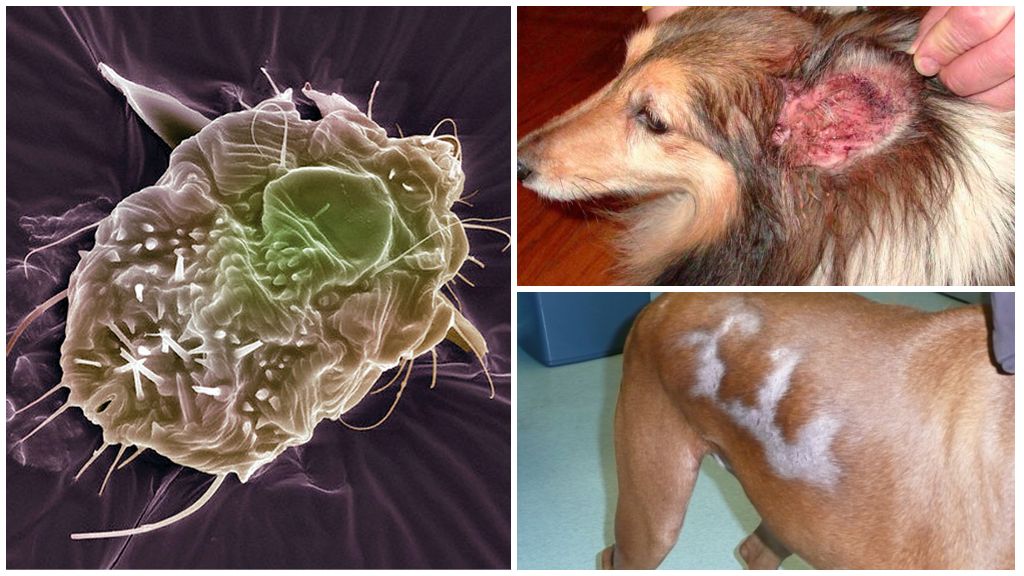
On a note!
The skin tick in dogs has similarities with an allergic reaction, some other dermatological diseases. To prescribe the right drugs, you need to establish a diagnosis. The disease is detected during examination, laboratory analysis of scraping of the affected areas of the epidermis.
Treatment of diseases caused by subcutaneous ticks
In dogs, signs of damage appear even when the parasite has multiplied. What to do in this case depends on the age of the pet, the degree of spread of the disease. For therapy, a medicine is prescribed in the form of drops, ointment, cream, injections, spray, aerosol. The treatment is carried out at home under the supervision of a veterinarian.
The basic principles of therapy:
- Stimulation of the immune system. When the protective functions of the body are strengthened, the number of parasites decreases, unpleasant symptoms disappear, the animal recovers. The main drug for stimulating the immune system Immunoparasitan, its analogues. The drug is administered intramuscularly. The course of therapy is 5-7 days.
- Local processing. Antiparasitic drugs are used to kill subcutaneous ticks. Acaricides are available in the form of shampoo, gel, spray, ointment, lotion. It is completely possible to remove a subcutaneous tick in 1-5 treatments. The duration of therapy depends on the degree of infection. The medicine is selected individually.
- Liver support. An auxiliary medication that is needed to maintain normal liver function. Anti-parasitic drugs negatively affect its functions. In most cases, Carsil is prescribed in the form of tablets based on natural ingredients. No side effects. The duration of treatment is at least 14 days.
- Antihistamines. Relieve local symptoms - itching, burning, inflammation, redness, stop the pathological process. An allergic reaction is caused by waste products or dead parasites in the process of decomposition.
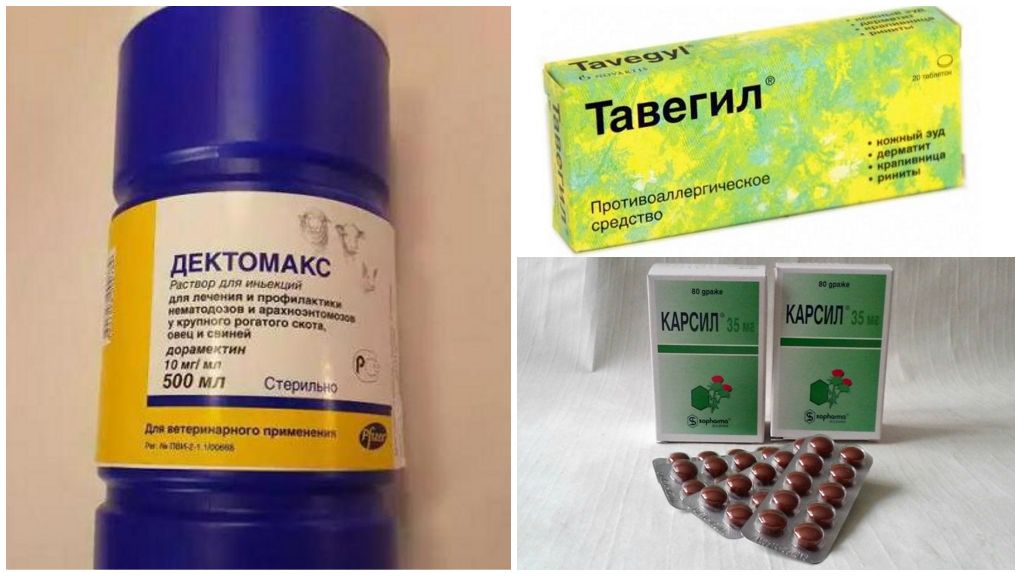
Injections from a subcutaneous tick are prescribed for severe damage, if it is impossible to cure with other drugs. Prescribe an antiparasitic drug - Detomax. It causes side effects, so it should be used in special cases.
Effective remedies
The disease manifests itself at the initial stage of the disease, but the owner of the dog does not always notice timely changes in behavior, in the appearance of the pet. Often bald patches appear on the face of the dog, legs, abdomen, ears. To establish a diagnosis, show the pet to the veterinarian.
Therapy begins with cleansing the skin of purulent discharge, coarsened areas. The epidermis is treated with hydrogen peroxide, chlorhekidine. Then proceed to the destruction of parasites. From subcutaneous ticks in dogs, acaricides are used:
- Amitan;
- Acarabor;
- Sulfur-zinc ointment.
With minor foci of infection spend up to 6 treatments with a break of 3-7 days. The dosage of each medicine is selected individually. Dogs with long hair must first be trimmed. Before applying the ointment from ticks, they bathe with a special antiseborrheic shampoo - Sulfoden.
Preparations for external treatment from a subcutaneous tick:
- Mitaban;
- Hemitraz;
- Stomozan;
- Immunoparasitan;
- Ivomek;
- Amitraz;
- Ivermek
- Dectomax
Often with combs, wounds form into which the infection can penetrate. The reproduction of bacteria is accompanied by the formation of ulcers, increased itching, irritation, increased lesions. Prescribe antibiotics, prebiotics, probiotics, hepatoprotectors (Essentiale, Karsil, Prokolin).
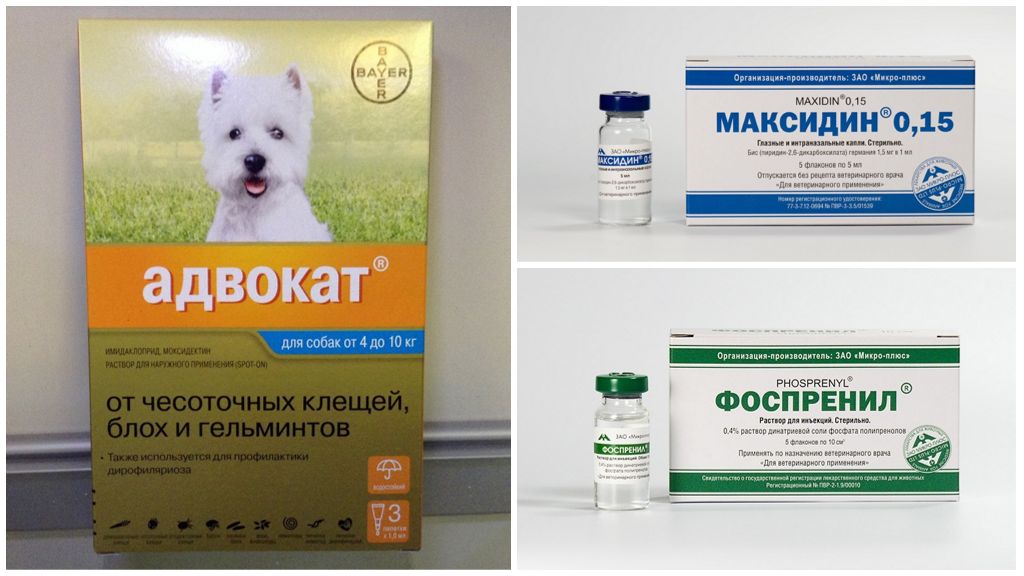
Immune strengthening drugs that accelerate recovery:
- vitamin complexes;
- Fosprenyl;
- Maksidin.
As an additional medicine, dogs are applied to the withers. drops lawyer, Stronghold. Active substances are localized in hair follicles, sebaceous ducts, protect up to 6 months.
Treatment with folk remedies
Self-prepared means are used to destroy subcutaneous mites, accelerate the restoration of the skin, and strengthen local immunity.
- Pour the roots of celandine with sunflower oil in a ratio of 1: 1. They put it in the oven at a temperature of 50 degrees Celsius. After 4 hours, they get out, filter. Apply the mixture to the affected areas 1 time per day.
- Apple cider vinegar is impregnated with cotton wool, the skin is treated. Or a solution is prepared - for 1 cup of warm water 1 tbsp. spoon means. Wipe three times a day.
- Tar soap is foamed, problem areas, wool are treated, wrapped with cling film, and washed off after 5-20 minutes. Repeat the procedure every other day.
- They treat wounds with kerosene. After 3 days, bathe the pet.
- Calendula, chamomile, thyme flowers are poured with boiling water. Insist for at least 30 minutes, treat the affected skin three times a day. The tool has a calming, anti-inflammatory, regenerating, anti-allergic property.
Folk remedies are used to treat a subcutaneous tick with a minor lesion or complement professional preparations. If the therapeutic effect with self-treatment does not occur within 5 days, you should seek the help of a veterinarian.
